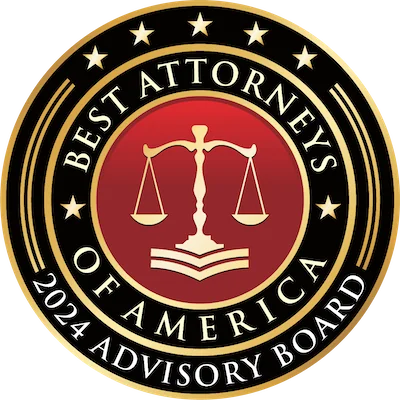Navigating the complexities of traffic laws, I’ve come to realize how crucial a clear understanding of right-of-way rules is in preventing accidents and ensuring safety on our roads. As a personal injury attorney, I’ve witnessed firsthand the disputes and legal battles that can arise from misunderstandings or disregard for these essential guidelines. It’s my goal to shed light on this topic, helping drivers, pedestrians, and cyclists alike navigate their journeys more safely and confidently.
Table of Contents
- What is Right-of-Way?
- Common Situations Involving Right-of-Way Disputes
- How Right-of-Way Affects Personal Injury Claims
- Know Your Rights: Understanding Legal Protections
- Preventing Accidents by Respecting Right-Of-Way Rules
What is Right-of-Way?
Definition and General Overview of Right-of-Way Laws
Right-of-way laws are crucial regulations that dictate who has the priority to proceed first in various traffic situations, aiming to prevent accidents by providing clear guidelines on yielding. These rules apply not only to motor vehicles but also to pedestrians, cyclists, and any other parties sharing the roadways. Understanding these laws is fundamental for anyone navigating public streets or highways as they establish a legal framework designed to enhance safety and efficiency in travel.
The Significance of These Laws in Traffic Regulation and Safety
The importance of right-of-way laws extends beyond mere orderliness; they serve as a linchpin for traffic regulation, ensuring smooth flow movement while minimizing potential conflicts among road users. By clearly defining who has precedence at intersections, pedestrian crossings, highway merges, etc., these rules significantly reduce the chances of collisions and misunderstandings. Additionally, adherence to the right of way is seen as a proactive measure towards promoting an overall safe environment and encouraging respectful, courteous behavior amongst all participants. This collective commitment to following established protocols ultimately contributes to safer, more predictable conditions conducive to responsible driving, walking, and cycling.
Common Situations Involving Right-of-Way Disputes
Discussing Scenarios Where Right-of-Way Is Often Misunderstood or Contested
Right-of-way disputes frequently arise in situations where the rules may seem ambiguous or are simply ignored. Intersections, particularly those without clear signage or signals, are common hotspots for confusion—drivers might not know who arrived first or misunderstand the yield requirements on turns. Pedestrian crossings can also be contentious areas; despite laws generally favoring pedestrian right-of-way, some drivers fail to stop. Moreover, highway merges present another challenge as vehicles attempt to enter exit lanes at varying speeds, misunderstanding yielding obligations. These scenarios highlight the need for heightened awareness and understanding of road regulations among all users to prevent accidents and ensure everyone’s safety.
Explaining How Such Misunderstandings Can Lead to Accidents or Legal Conflicts
Misinterpretations of the right way often result in direct collisions and other types of traffic incidents, leading to potentially serious injuries and property damage. When individuals assume they have priority without a legal basis, it creates unpredictable dangerous environments on roads. Furthermore, beyond the immediate physical risks involved parties find themselves embroiled in legal battles concerning liability compensation. Understanding and navigating the complexities of these disputes requires knowledge and expertise in personal injury law, emphasizing the importance of educated decisions when behind the wheel, walking, or biking city streets.
How Right-of-Way Affects Personal Injury Claims
The Role of Determining Fault Based on Violation of Right-of-Way Laws in Personal Injury Cases
In personal injury cases stemming from traffic accidents, establishing who had the right-of-way at the time of the incident is a critical factor in determining fault. This legal principle not only helps clarify liability but also significantly influences the outcome of claims for damages and compensation. When it’s proven that one party violated right-of-way laws—whether by failing to yield, ignoring traffic signals, or any other breach—they’re typically found at fault for resulting injuries or losses. This determination forms the basis upon which insurance companies and courts decide how much compensation is owed to affected parties.
Examples Illustrating How Disregarding These Rules Can Impact Liability and Compensation
Consider a scenario where a driver turns left at an intersection without yielding to oncoming traffic as required, resulting in a collision with another vehicle. In such cases, the violator clearly disregarded established rules, thus bearing the majority if not the entire responsibility for ensuing damages. Similarly, a pedestrian struck in a crosswalk where the driver failed to stop could see the motorist held liable due to pedestrians generally having precedence in these locations. Through real-world examples like these, it becomes evident that adherence and respecting the right of way is paramount to avoiding legal repercussions and ensuring fair resolution of disputes that arise.
Know Your Rights: Understanding Legal Protections
Outlining the Rights Individuals Have Under Law When Involved in an Accident Due to a Right-of-Way Dispute
When accidents occur due to right-of-way disputes, it’s crucial for individuals involved to understand their legal rights and protections. In most jurisdictions, laws are designed to safeguard those who adhere to traffic regulations, offering them avenues for recourse if they’re injured or suffer property damage because of another’s failure to comply with these rules. This includes the right to file a personal injury claim against at-fault parties seeking compensation for medical expenses, lost wages, and pain and suffering, among other damages. Being aware of such protections empowers victims to navigate the aftermath of their accident more effectively.
Advice from a Personal Injury Attorney on Protecting Oneself Legally After an Incident Occurs
As a personal injury attorney in a firm that specializes in cases involving traffic-related incidents including those stemming from right-of-way disputes, my foremost advice is to promptly document everything related to the crash. This means calling the police to the scene to ensure an official report is filed, collecting contact information of witnesses, and taking photos of any visible vehicle damage. Additionally, it is advisable to seek medical attention immediately, even if symptoms seem minor at the onset as they could manifest into serious conditions later. Lastly, consulting an experienced lawyer can provide invaluable guidance through the complexities of the legal system, ensuring your rights are fully protected at every step of the recovery process. With proper representation, you significantly increase the chances of securing fair compensation while also holding negligent parties accountable for their actions.
Preventing Accidents by Respecting Right-Of-Way Rules
Tips for Drivers, Pedestrians,and Cyclists on Adhering to These Regulations to Ensure Safety for All Parties Involved
To foster safer roads and reduce the incidence of accidents related to right-of-way disputes, drivers, pedestrians, and cyclists alike must adhere strictly to traffic regulations. For drivers, this means always yielding to pedestrians at crosswalks and obeying stop sign signals, even when no other vehicles appear to be present. Additionally, motorists should remain vigilant at intersections, particularly those without clear markings and signage, giving the right of way as necessary based on established principles.
Similarly, pedestrians must use designated crossing points whenever available, making sure they are visible to approaching traffic before stepping onto the road. Cyclists too play a crucial role in observing the same rules that apply to their motorized counterparts, including signaling intentions and following lane markings. By collectively committing to these practices we can significantly diminish risks associated with misunderstandings and conflicts, thus enhancing the overall safety of everyone sharing public roads.
The Importance of Education and Awareness in Promoting Right-of-Way Adherence
Education awareness campaigns serve a pivotal function in reinforcing the importance of respecting and understanding nuances governing interactions among different types of roadway users. Initiatives aimed at raising profile-specific issues like pedestrian priority zones and areas of frequent merging activity help build collective consciousness about how best to navigate shared spaces. Moreover, offering resources such as workshops and community events focused on safe driving, walking, and cycling behaviors encourages proactive engagement. Ultimately fostering an environment where knowledge and respect for the foundational principles contribute to creating a more harmonious coexistence on streets, pathways, and beyond.
If you or your loved one have been involved in an accident, contact us at Silver Injury Law without delay. We never use an intake department, meaning that one of our attorneys will be on the case fast, securing evidence and ensuring that you receive maximum compensation, so you can focus on healing.




